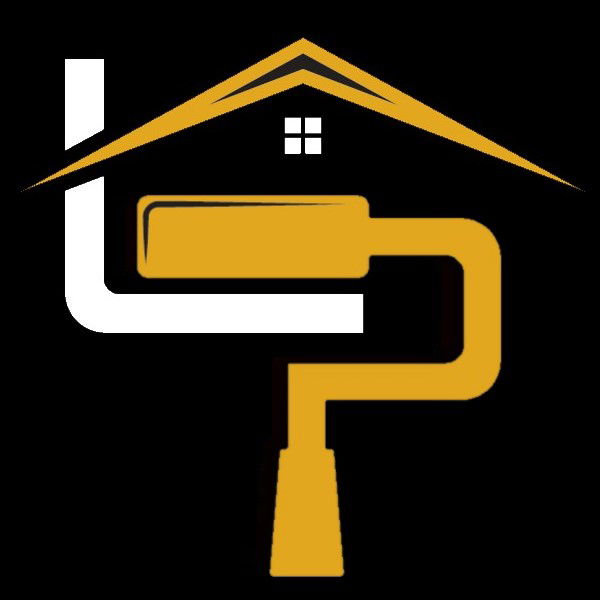How to Estimate for Painting: A Guide to Time and Material Planning

Key Features
- Accurate Surface Area Calculation: Measuring each surface precisely ensures the right amount of paint and primer is purchased.
- Labor and Material Transparency: Clear itemized estimates for labor, tools, and materials build trust with clients.
- Profit Margin Planning: Calculating labor, materials, and overhead ensures a profitable project while staying competitive.
Paint Calculator Below
How to Estimate
Accurate estimates are the backbone of a successful painting business. Knowing how to estimate for painting jobs helps you plan projects efficiently, ensuring profitability while meeting client expectations. Whether you're painting a residential home or a commercial space, time and material planning are essential to keep operations smooth and on budget.
What Are the Key Components of a Painting Estimate?
A painting estimate typically includes labor, materials, time, and overhead costs. You want to make sure you factor in every detail so there are no surprises for you or the client. Breaking down the estimate step-by-step ensures transparency and sets realistic expectations.Here’s what you need to include:
- Surface area to be painted (walls, ceilings, or trim)
- Paint and primer quantity needed
- Labor time required (including prep and clean-up)
- Cost of tools and supplies (brushes, rollers, sprayers)
- Overhead costs (insurance, fuel, or admin expenses)
How Do You Calculate the Surface Area?
To determine how much paint you’ll need, the first step is measuring the surface area. It’s all about basic math—multiply the height by the width of each wall. Don’t forget to subtract space for windows, doors, or other unpainted areas.
For example, a 12x10-foot wall gives you 120 square feet of surface area. If you’re painting four walls in a room that size, you’re looking at 480 square feet total.To be safe, add 10% more to account for touch-ups and waste.
| Room Size | Surface Area to Paint | Paint Needed (1 gallon = ~350 sq ft) |
|---|---|---|
| Small Bedroom (10x12 ft) | 400-500 sq ft | 1.5-2 gallons |
| Living Room (15x20 ft) | 700-800 sq ft | 2-3 gallons |
| Entire House Interior (~2,000 sq ft) | ~8,000 sq ft | 20-25 gallons |
How Much Time Should You Allocate for a Painting Job?
Time estimation depends on several factors—prep work, the number of coats, drying time, and project complexity. A standard room (approximately 12x12 ft) with minimal prep might take 4-6 hours, including breaks. However, jobs involving repairs, wallpaper removal, or tricky ceiling work will require more time.Here's a rough breakdown:
- Preparation and masking: 1-2 hours per room
- Priming: 1-2 hours per coat
- Painting walls and ceilings: 4-6 hours
- Trim work: 1-2 hours per room
- Final clean-up: 1 hour
Pro Tip:
To speed things up, consider using a paint sprayer for larger areas. While it requires practice, it cuts application time dramatically for ceilings and walls.
How Do You Calculate Labor Costs?
Labor costs are a significant part of any painting estimate. Start by determining the hourly rate for your painters. A good rule of thumb is $40-$50 per hour, though this varies based on experience and region.Use this simple formula to estimate labor costs:
Labor Cost = (Number of Painters × Hours Required) × Hourly Rate
For example, if two painters work for eight hours each at $45/hour:
(2 painters × 8 hours) × $45 = $720 in labor costs.Always build in a buffer for unexpected delays or additional coats.
Things to Know
- Use estimating apps: They streamline the process and ensure consistency.
- Factor in a 10-15% buffer: It accounts for unforeseen circumstances or extra materials.
- Choose the right tools: High-quality brushes and rollers ensure better results with fewer coats.
- Don’t skip prep work: Proper surface preparation reduces the chances of rework.
- Profitability matters: Always calculate a reasonable profit margin to sustain your business.
What Paint and Materials Should You Include?
Selecting high-quality paint is essential for durability and client satisfaction. You’ll need to calculate the amount of paint required based on the total surface area. Most gallons cover about 350 square feet, but factor in extra for highly absorbent surfaces like brick or stucco.Here’s what to include in material costs:
- Paint and primer (5-10% extra for touch-ups)
- Brushes, rollers, or sprayers
- Painter’s tape and masking materials
- Drop cloths or plastic sheeting
- Caulk or putty for repairs
Keep track of these costs to provide a transparent breakdown to your clients.
How Should You Price for Profitability?
Once you’ve estimated labor and material costs, it’s time to price the project for profit. Many professional painters aim for a 20-30% profit margin. You can add your markup to cover overhead expenses such as fuel, insurance, and marketing.Here’s the formula to calculate your total project price:
Total Project Cost = (Labor + Materials) × (1 + Profit Margin)
If labor and material costs total $2,000, and you want a 25% profit margin:
$2,000 × 1.25 = $2,500 total project price.This ensures you’re covering your costs while still earning a fair profit.
What Should Be in Your Final Estimate?
A professional painting estimate should be clear and itemized. Include the following sections:
- Project Overview – A brief description of the work to be done.
- Labor Cost – An estimate of hours and labor rates.
- Material Cost – A breakdown of the paint and supplies needed.
- Timeline – Start and completion dates.
- Terms and Conditions – Include warranty information, payment schedule, and any contingencies.
Providing clients with an organized, transparent estimate builds trust and reduces the likelihood of disputes later on.
In Our Experience:
"Every Project is different. Each with its own obstacle and hurdles to address. One of the most under rated and not talked about much at least in my circles, is selling your self and how much it matters. People almost alway look first at the price tag when looking at an estimate but they see you before that estimate. My advice is be yourself and if it is meant to be then it will be. Every time I've tried to go above and beyond and focus all my effort into one thing it never fails to blow up in my face. But when im myself and give my 100 and not try for 110 or 120... That's when I personally shine. Understanding we can only be ourselves and most times, it's well past par is my 2 cents for the day."
Tips to Streamline the Estimating Process
- Use an estimating app: Many apps calculate time and material costs automatically based on your inputs.
- Create a template: Having a standardized estimate template saves time and ensures consistency.
- Include a contingency: Add a 10-15% buffer to account for unexpected changes or additional work.
Estimating for painting requires balancing time, materials, and labor efficiently. With practice, you’ll be able to create accurate estimates that keep projects profitable while meeting client expectations.
Do You Have Questions? Give Us A Call With Any & All! 503-389-5758
-
People Also Ask:
How does Lightmen Painting ensure client satisfaction through accurate project estimation?
Lightmen Painting prioritizes client satisfaction by providing clear and honest communication about project timeframes and material requirements from the outset. Accurate estimations allow for realistic timelines and thorough understanding of material needs, reducing the chance of unexpected delays or expenses. This transparency builds trust, ensuring clients are well-informed and confident in the service provided, fostering a relationship based on reliability and mutual respect.
What strategies does Lightmen Painting use to manage resources efficiently in painting projects?
Lightmen Painting employs several strategies for efficient resource management, including meticulous calculation of paint and material requirements using a tried-and-tested formula that accounts for surface area, paint type, and surface porosity. They also include a margin for waste and overages, ensuring an ample supply of materials while minimizing environmental impact. This careful planning and calculation optimize operational efficiency, prevent unnecessary spending, and reduce excess waste.
How does Lightmen Painting adapt to unforeseen challenges during a painting project?
Lightmen Painting prepares for the unpredictable by incorporating buffer time and material contingencies in their project planning, allowing them to account for weather uncertainties and surface challenges. Their experienced team is equipped to make real-time adjustments to project timelines or revise material requirements, ensuring flexibility without sacrificing quality. Through responsive decision-making and client collaboration, they maintain project progress and client satisfaction, even when facing unexpected obstacles.
-
SUBSCRIBE TO OUR BLOG: Stay informed with the latest in Painting and DIY projects by subscribing to Lightmen painting. Get insights, tips, and more delivered straight to your inbox. We would also love to know what you would like to read about, leave thoughts on where we should go next. Interests, Topics, Ideas, all are welcome.
If your in the Portland, Or. area and need advice or a free no obligation estimate call us at 503-389-5758 or email scheduling@lightmenpainting.com
Shout Out:
Fine Homebuilding - Cabinet Refinishing Challenges
Fine Homebuilding’s forum features in-depth discussions on cabinet refinishing challenges, with expert advice from seasoned professionals. Lightmen Painting appreciates how these insights help improve project outcomes.
Read more at Fine Homebuilding.
Thanks for stopping by Lightmen Daily! Stay tuned for more practical tips and expert advice on making your painting projects flawless, from wall to floor!
Lightmen Painting Serving: Portland, Tigard, Lake Oswego, Tualatin, West Linn, Milwaukie, Sherwood, Happy Valley, Oregon City, Beaverton, Hillsboro, Gresham -Trade Partners-

